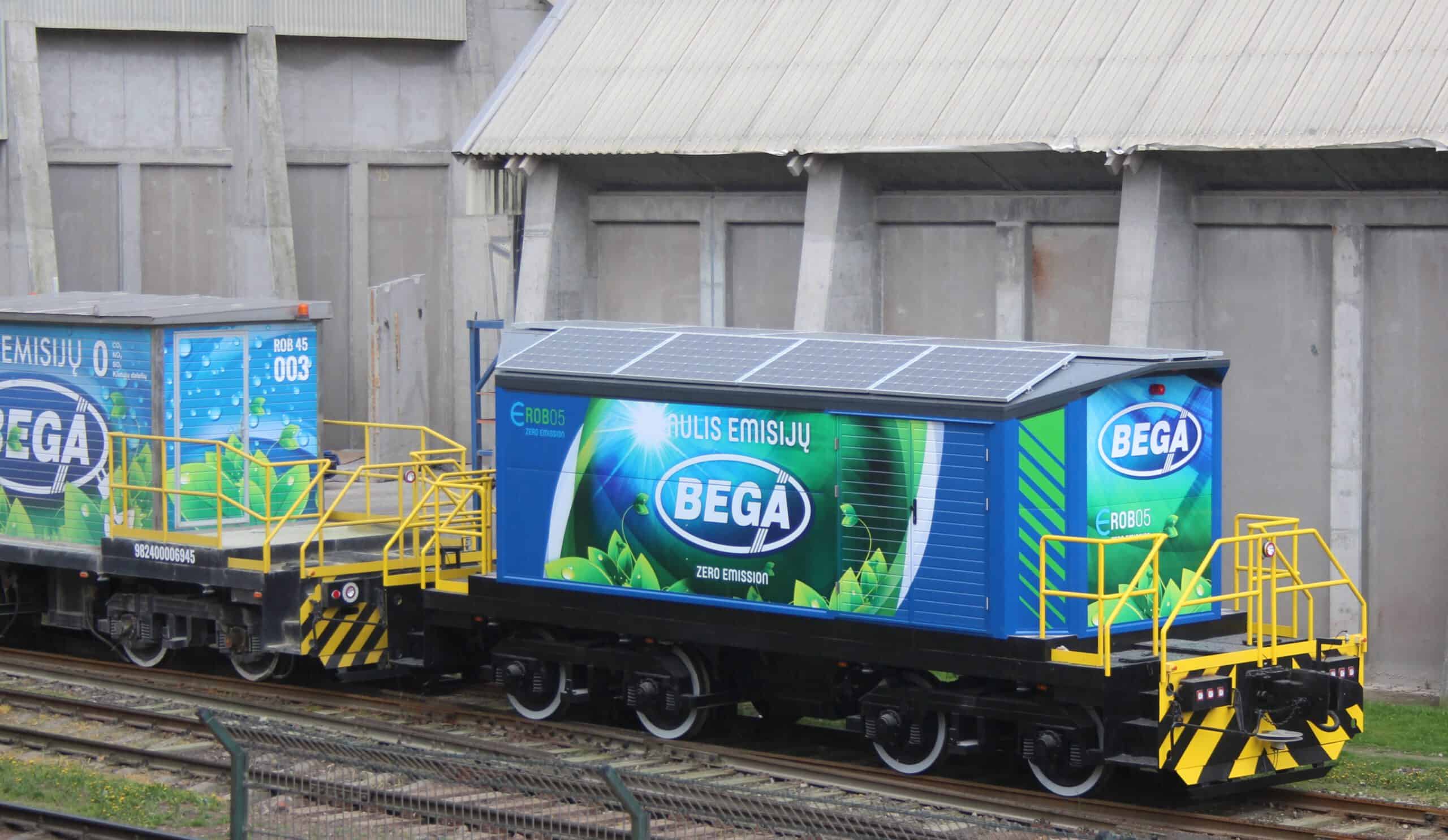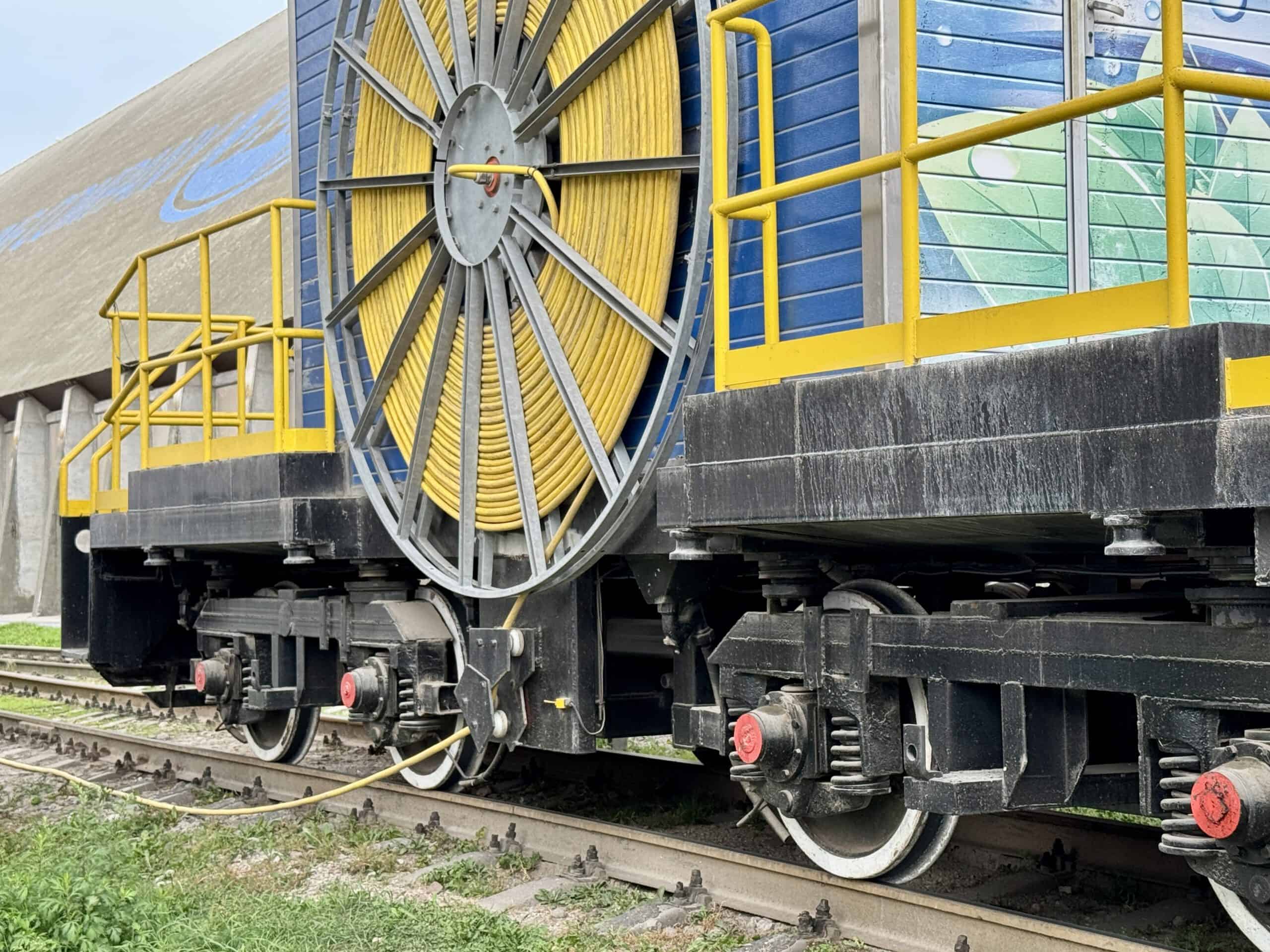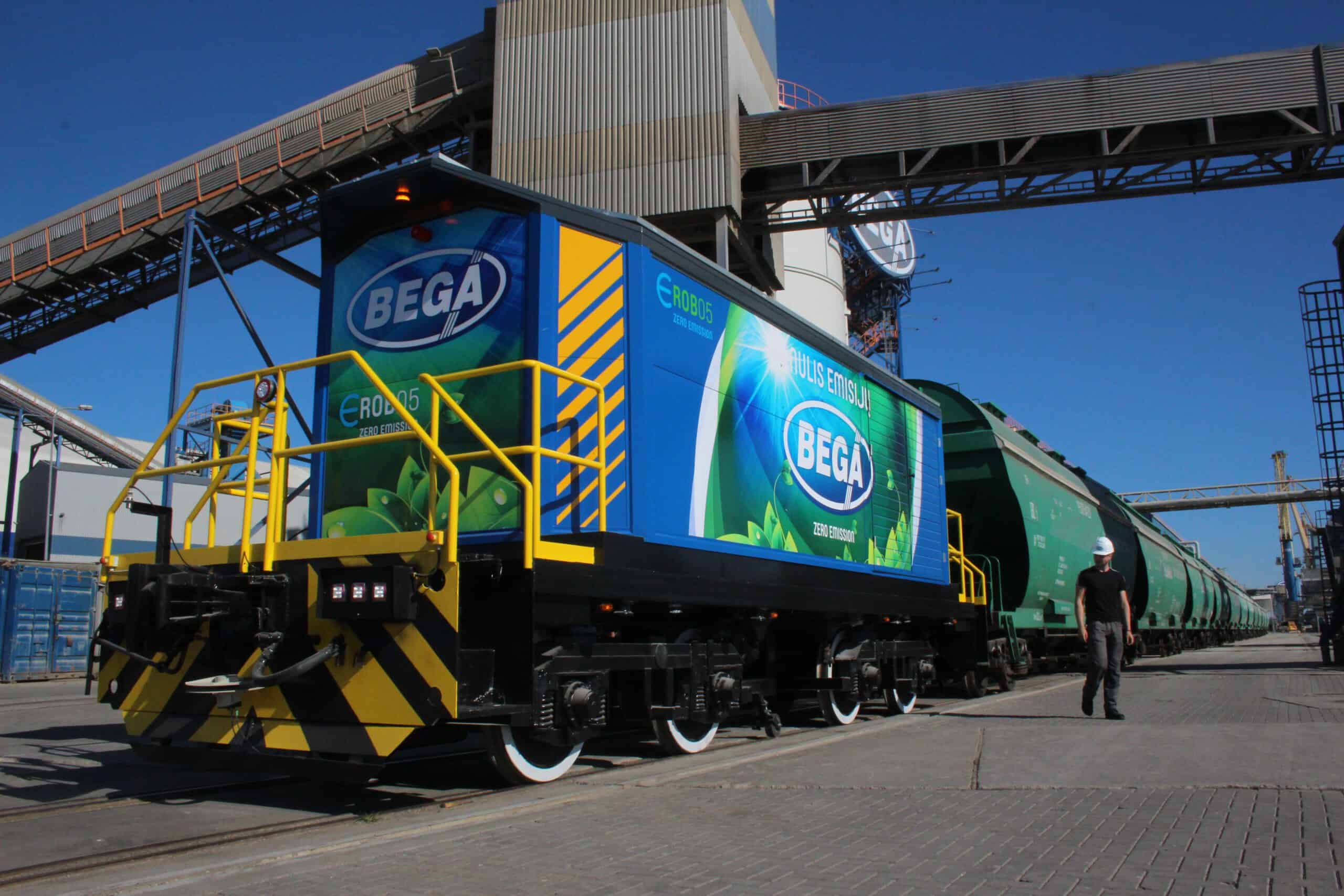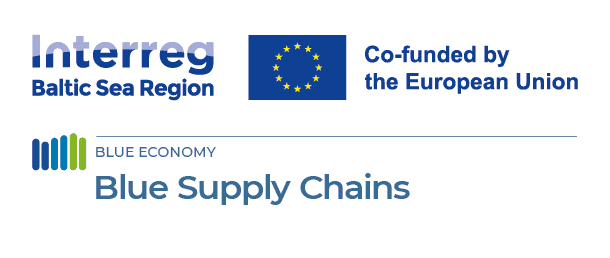
Smart green solutions for e-shunting operations at the BEGA terminal in Klaipeda
03 October 2024
Founded in 1992, BEGA is Lithuania’s first private stevedoring company and one of the most modern stevedoring enterprises in Klaipeda’s port. The company provides cargo handling and a variety of other transport and logistics services, specializing in the handling of dry and liquid bulk products.
Given the terminal’s modern character, it is no wonder that BEGA is actively pursuing solutions that enable the decreasing of emissions during handling operations. Environmental consciousness and sustainability are the name of the game for the BSC partners, and so the participants of the partner meeting were thrilled to jump on the opportunity to experience the electrified shunting operations firsthand.

© BEGA / BSC
On track towards emissions cuts
The main hero of this story is BEGA’s e-locomotive, which operates on the railway network and was developed and custom-made according to the company’s specific requirements. The design itself is incredibly ingenious and pretty much oozes sustainability. BEGA’s staff invented a methodology, along with unique software, enabling them to bring second life to used car battery packs and electric engines. These are now used to power locomotives, allowing for a switch from diesel to electricity and a significant reduction in greenhouse gas (GHG) emissions.
The shunting operations are conducted in short windows of activity for the locomotive, as it moves the waggons step by step to the loading/unloading spots. This translates to approx. 10 second activity windows with breaks for the loading and unloading of cargo. Coupled with a flat terminal layout (no steeps slopes or hard curves), it minimizes the maximum power requirements and makes it possible for the battery to last for up to 10 days.
Over half BEGA’s railway locomotives has been converted to electric robotic units, allowing for the majority of rail shunting operations at the company’s terminals to be conducted emission-free.
Why stop here?
The Port of Klaipeda and BEGA certainly do not plan to do so any time soon. Just earlier this year both companies signed a Memorandum of Understanding (MoU), declaring their commitment to climate change mitigation. Green hydrogen is set to play a big role in this undertaking.
Following the example of other advanced ports, the Lithuanian port plans to introduce new fuels, green hydrogen being one of them. Included in the MoU is the aim for both companies to pool resources and knowledge to create a value chain for green hydrogen use.
But naturally, there must be a train somewhere in there as well, right? Correct! BEGA has already identified the potential for building a prototype hydrogen-powered locomotive using the experience they have accumulated while developing its e-powered counterpart.
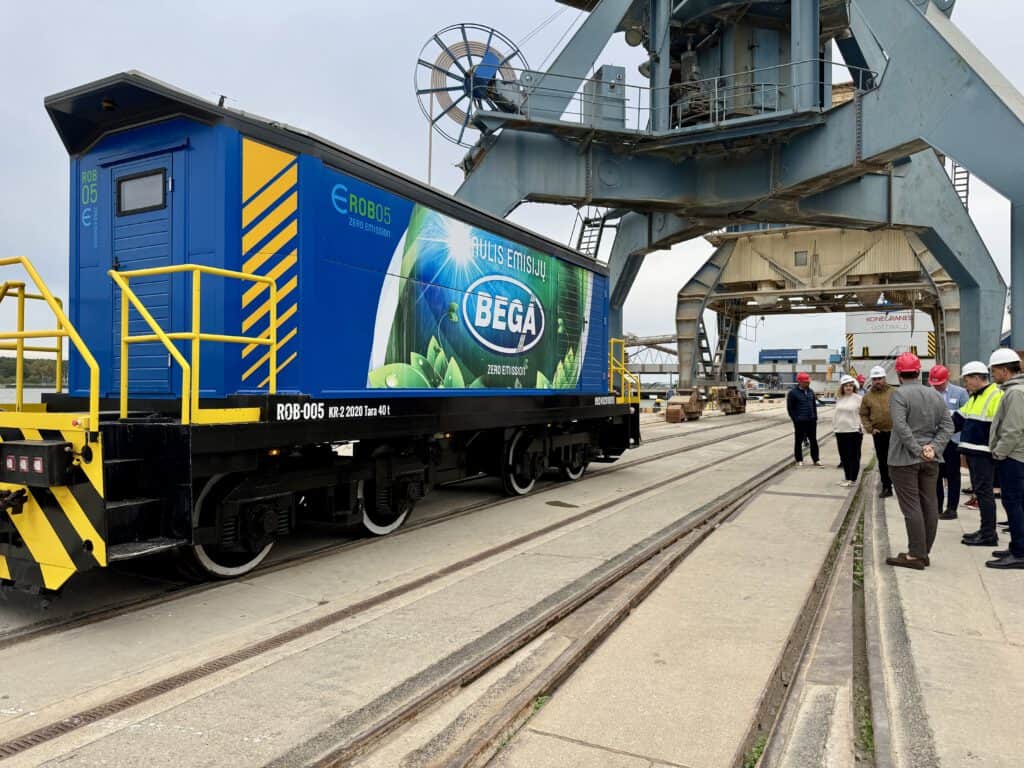
© BEGA / BSC
The terminal in a nutshell
BEGA operates a number of specialized terminals, including the bulks import-export terminal, the agribulks terminal, the cement terminal and the liquid food products terminal.
Additional information:
- Total area: 30 ha
- The reserve area for logistical operations: 7 ha
- Bulk terminals cargo accumulation capacity: 800.000 tons
- Liquid reservoir capacity: 100.000 cubic meters
- The technical capacity of terminals: 8-10 mln tonnes per year
We would like to thank BEGA for this unique chance to get a glimpse of the inner working of their terminal in Klaipeda. It was a fantastic experience and opportunity to expand our understanding of the opportunities electricity can offer the port sector.







